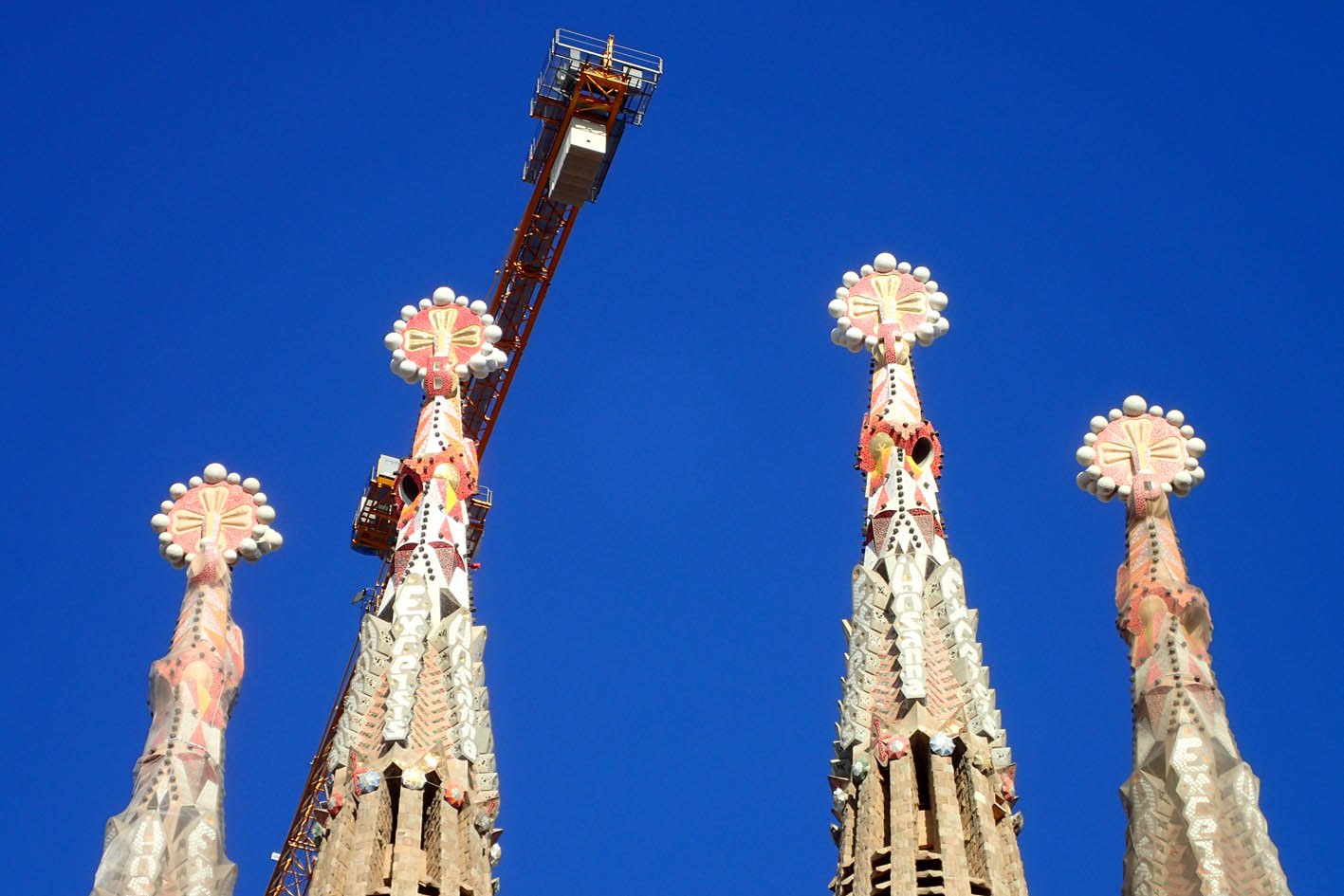Barcelona’s Best Attractions
There’s a reason Barcelona sees so many visitors. For such a compact city the sheer number of cultural and historical attractions is amazing. How do you find Barcelona’s best attractions? We’re here to help!
There will inevitably be queues for the most popular attractions (think La Sagrada Familia, Casa Batlló, and Park Güell). But the other attractions offer some insights into the city’s history and culture without tripping over a million other tourists.
Here’s my TL;DR list if you want a quick fix: The top 5 Barcelona attractions, and 5 alternatives to avoid the crowds
I have a caveat here. There’s almost no attraction that will be totally devoid of tourists, and the recent bump in visitor arrivals has even seen some of my top alternatives require advance bookings.
There are so many things to do in Barcelona you don’t have to queue for hours to get a taste. I’d argue that by avoiding the biggest attractions you’ll actually get a better feel for the real Barcelona.
What to see and do in Barcelona
No matter whether you’re interested in art galleries, architecture, history museums, Barcelona’s wonderful markets, or the parks and gardens, Barcelona has something to piques your interest.
Art
One thing I do annually is but an Articket BCN. For €38 you get entry to six of the top museums in the city. Not bad!
The six – in order of my preference – are:
Museu Nacional d’Art de Catalunya (MNAC)
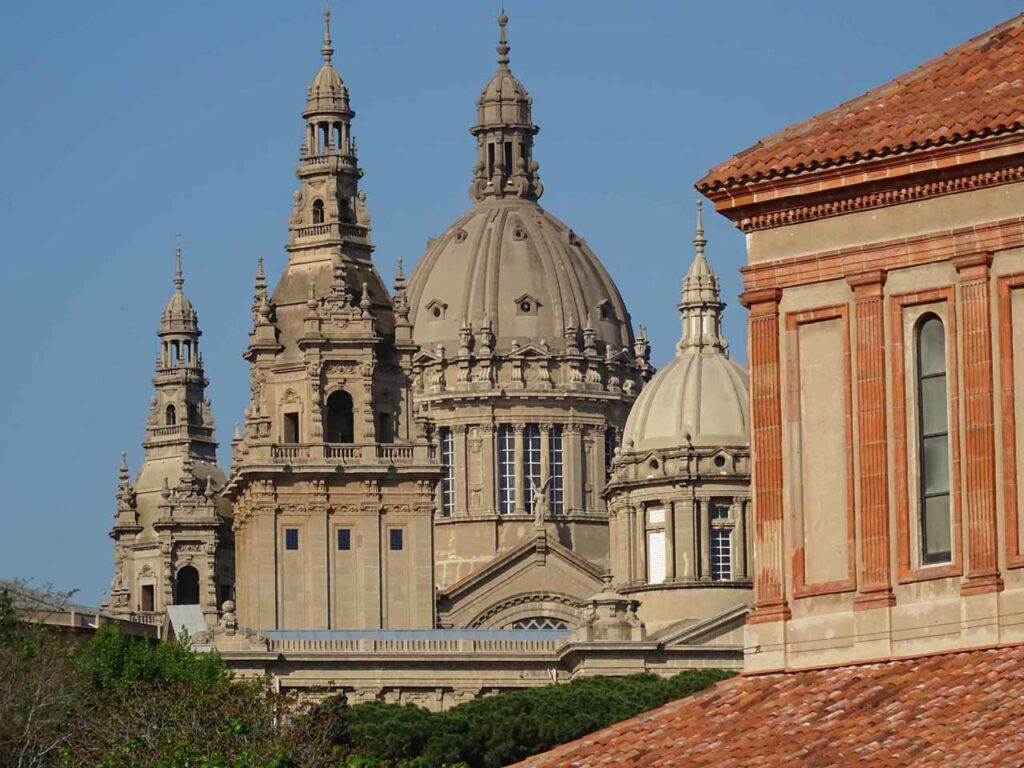
Housed in an elaborate Italianate structure built for the 1929 International Exposition, MNAC’s collection ranges from what is regarded as the world’s largest exhibition of Romanesque art, through to Gothic, baroque, Renaissance and modern.
Its commanding position, with views over the impressive Font Màgica de Montjuïc to the hills in the distance, sees a regular number of visitors for the outlook alone.
MNAC not only has an extraordinary permanent collection, but frequently hosts visiting exhibtions that are generally very well curated too.
One of my faves.
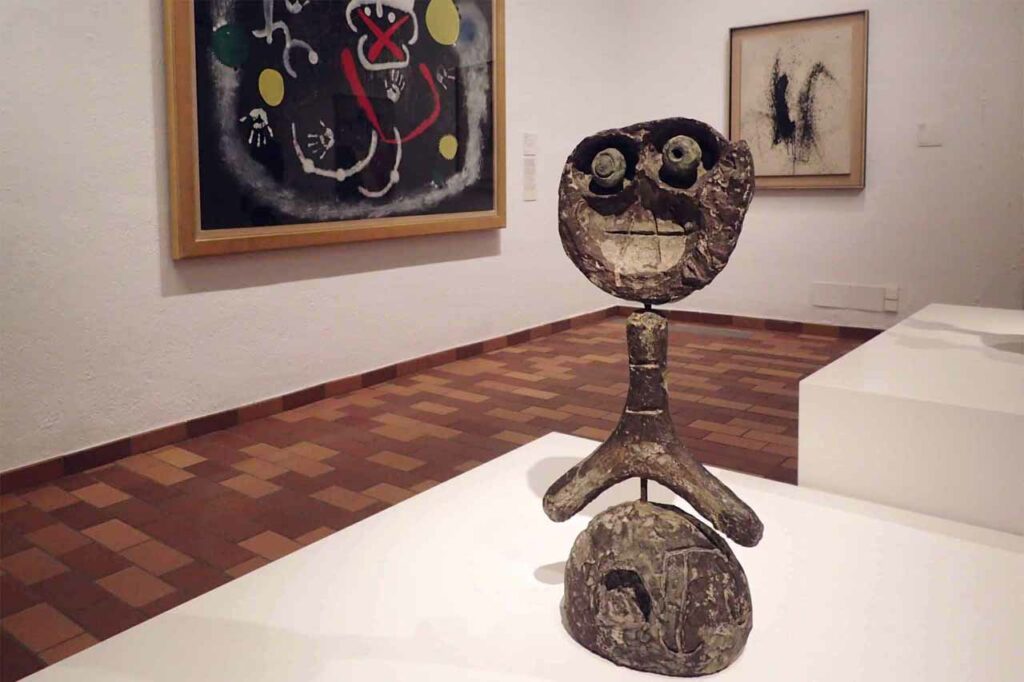
Home to more than 14,000 works by Joan Miró, this gallery may not be on everybody’s list – not the least because Miró is hardly a household name for many.
Still, the purpose-built space is amazing, and even if you’ve never heard of Miró, you’re going to get the best intro to his work in the world here.
It’s another gallery that hosts visiting exhibitions, though in my experience some are better than others.
Centre de Cultura Contemporània de Barcelona (CCCB)
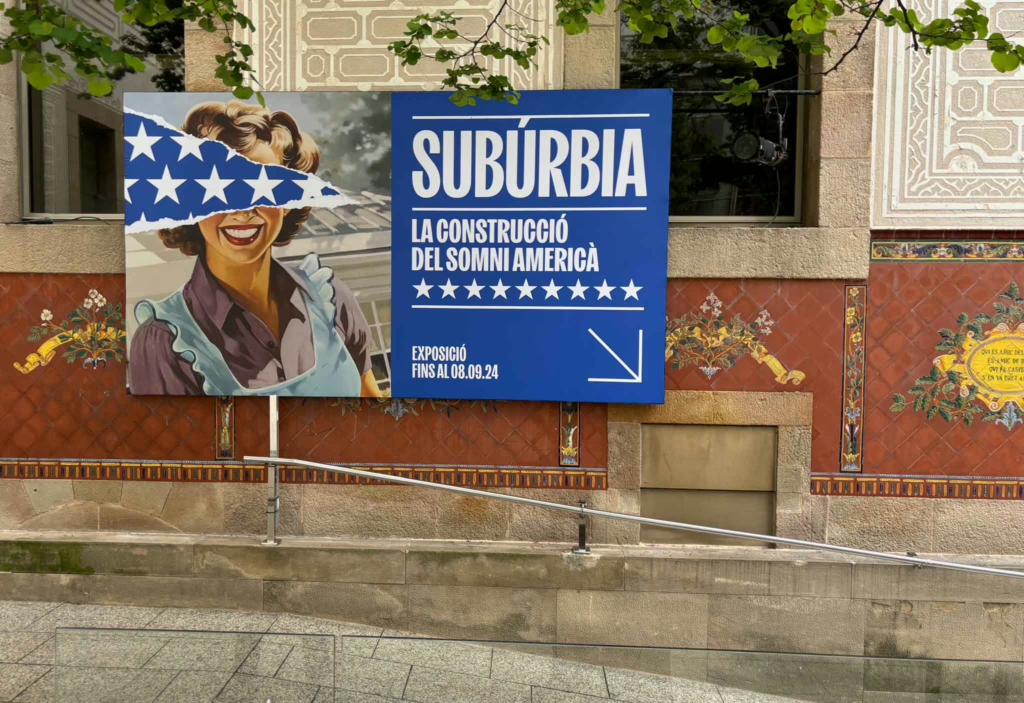
The name’s a bit of a giveaway here: CCCB is a cultural centre as opposed to a gallery. Don’t let that put you off.
While CCCB hosts debates and other cultural events, some of the most memorable exhibitions I’ve seen were hosted here. (Off the top of my head this includes the annual World Press Photo award exhibition; an utterly marvelous Stanley Kubrik one; and one about the development of suburbia in the US and elsewhere that was mind-blowingly good).
Check to see what’s on, and prepare to be surprised.
Museu d’Art Contemporani de Barcelona (MACBA)
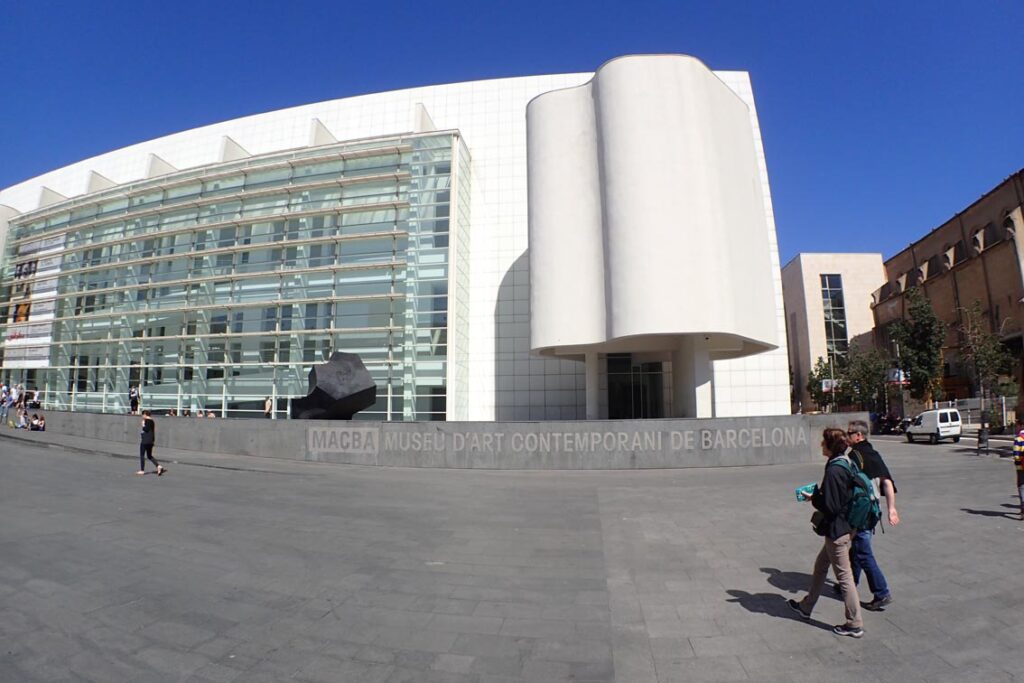
Yet again, the name gives the game away here. MACBA is Barcelona’s home for contemporary art.
If you ‘get’ contemporary art MACBA is your type of place. Even for we philistines, some exhibitions are mind-blowing, and the permanent collection has some gems too.
The superb Richard Meier-designed space is a bonus, and even the gift shop is well curated. Recommended.
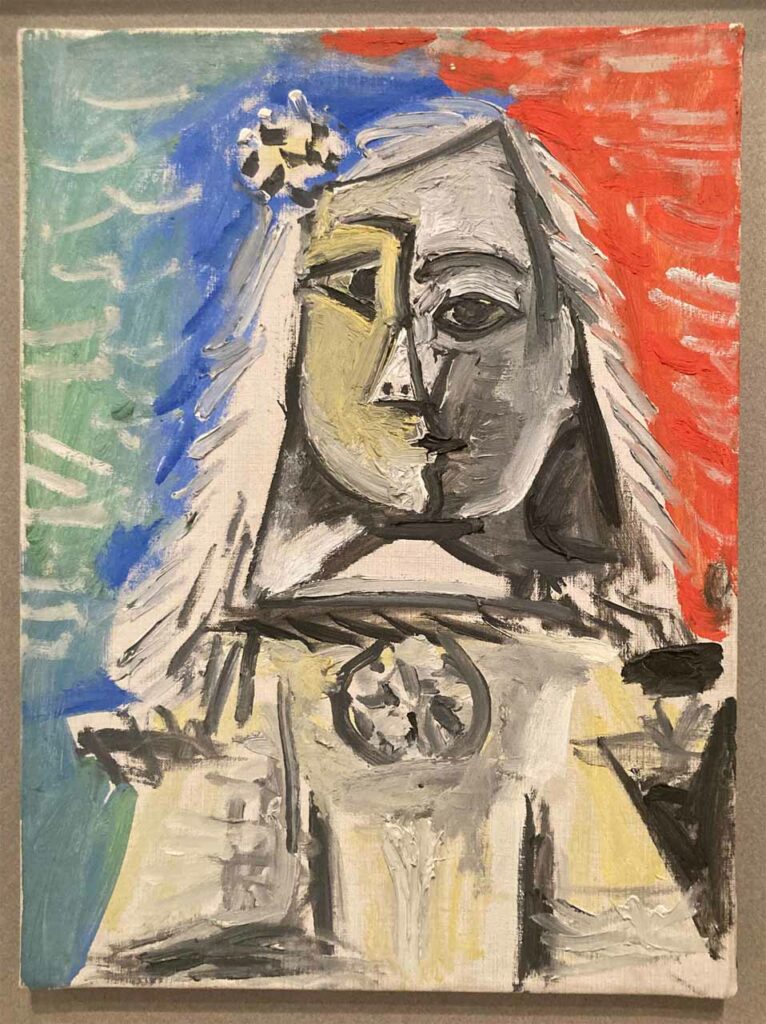
Arguably the Picasso Museum is Barcelona’s most visited gallery. You will need to book online in advance to avoid the queues (or buy the Articket – which pushes you to the front of the queue).
Be prepared to view the works in the close company of a lot of tourists who are merely checking a box by being here. It’s Picasso, after all.
The permanent collection is pretty amazing and spans his entire career. It also helps that it is housed in in five adjoining palaces in the old town, so the space is quite spectacular.
While it is absolutely worth a visit, the crowds can be offputting.
The last of the galleries on the Articket list is Museu Tàpies. Like the Miró, unless you’re from an art historian family, it’s unlikely Tàpies is an artist you’re likely to be familiar with. Also like Miró, a visit here will familiarize you with his work.
I’ll be honest here: Tàpies is not my favourite artist, but beauty, as they say…
Still, the Museu Tàpies is easily accessible in the Eixample, is a lovely space, and it often houses travelling exhibitions by other artists. Somehow, that Articket stamp always manages to make it into my Art Passport.
More Galleries
But wait, you also get…
If you think the six museums on the Articket are all you need, think again. Barcelona has a lot more to offer than just those.
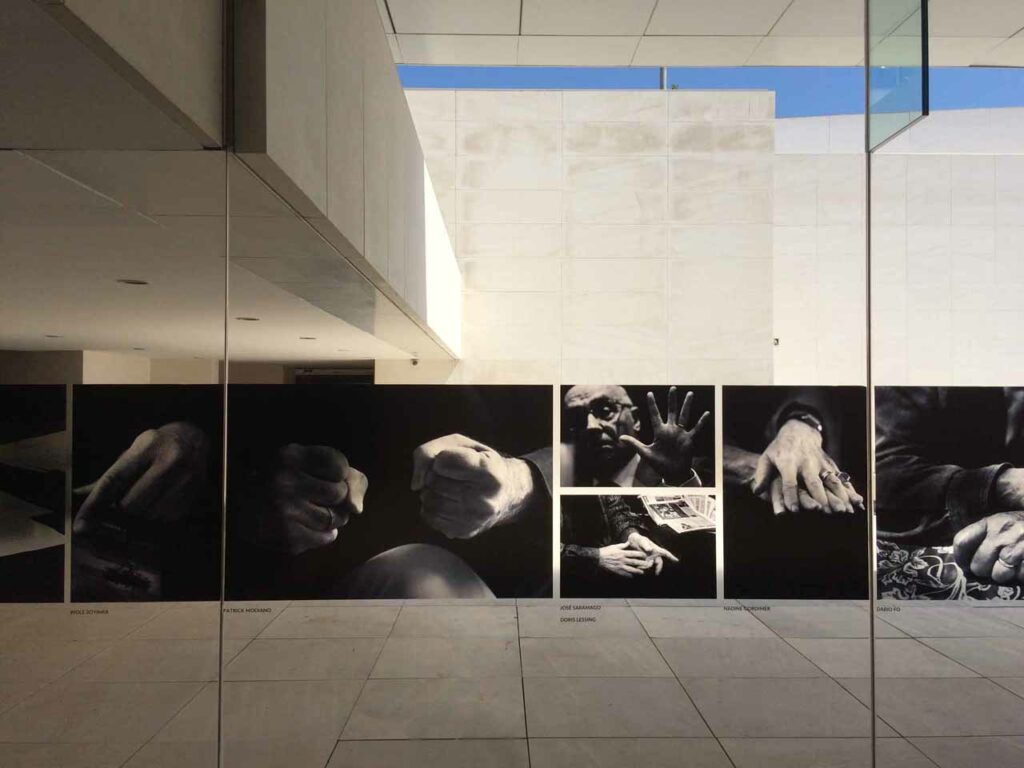
Owned by La Caixa bank, CaixaForum offers touring exhibitions (some better curated than others), and entrance prices that are hard to resist – the better ones will set you back around €6. It’s an excellent almost-off-the-tourist-map choice.
As the cherry on top, the museum is housed in a fascinating restored Modernista factory.

The Museum of Prohibited Art showcases works and artists that have been censored, attacked or renounced due to political, social or religious reasons.
It’s a fairly broad showcase of more than 200 relatively recent works from artists you may know – think Robert Maplethorpe, Andy Warhol or Ai Weiwei – to works by anonymous artists. If you’re easily offended it’s probably not for you (though I’d be wary about taking young children if you want to avoid some uncomfortable questions).
Housed in the lovely Casa Garriga Nogués in Eixample, it’s another lovely exhibition space too.
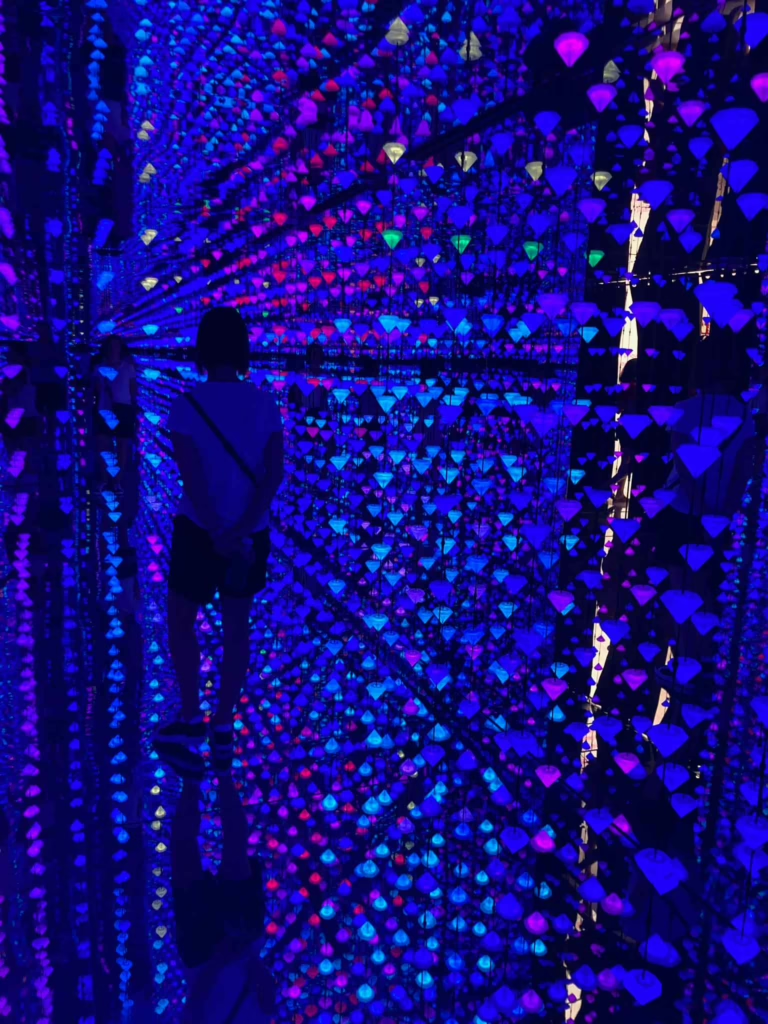
An outpost of the original Amsterdam Moco, Moco Museum Barcelona is an independent museum featuring modern, contemporary, and street art from the likes of Keith Haring, Salvador Dalí, Jean-Michel Basquiat, Banksy, and Marina Abramović.
If modern art by household names floats your boat, this is the place for you.
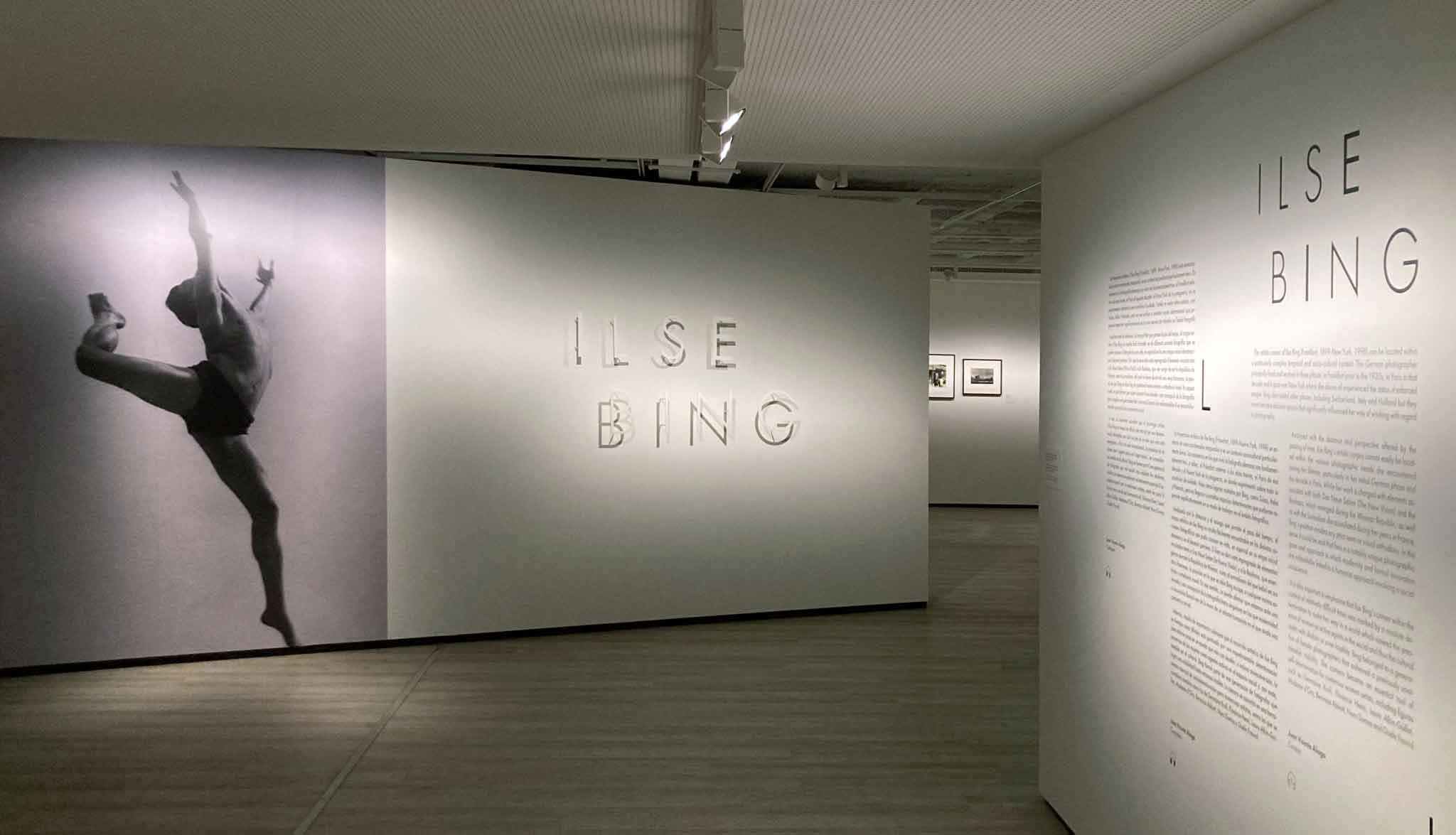
KBr Fundación MAPFRE Barcelona Photo Center is – you guessed it! – a space dedicated to photography exhibitions. The two exhibition spaces are devoted to works by individual photographers, and the curation is excellent. I’m going this month. And next…
Architecture
Architecture is yet another of Barcelona’s main attractions. Home to the Modernista movement of the late 19th and early 20th centuries, Barcelona abounds with modernista masterpieces, many of which you can visit.
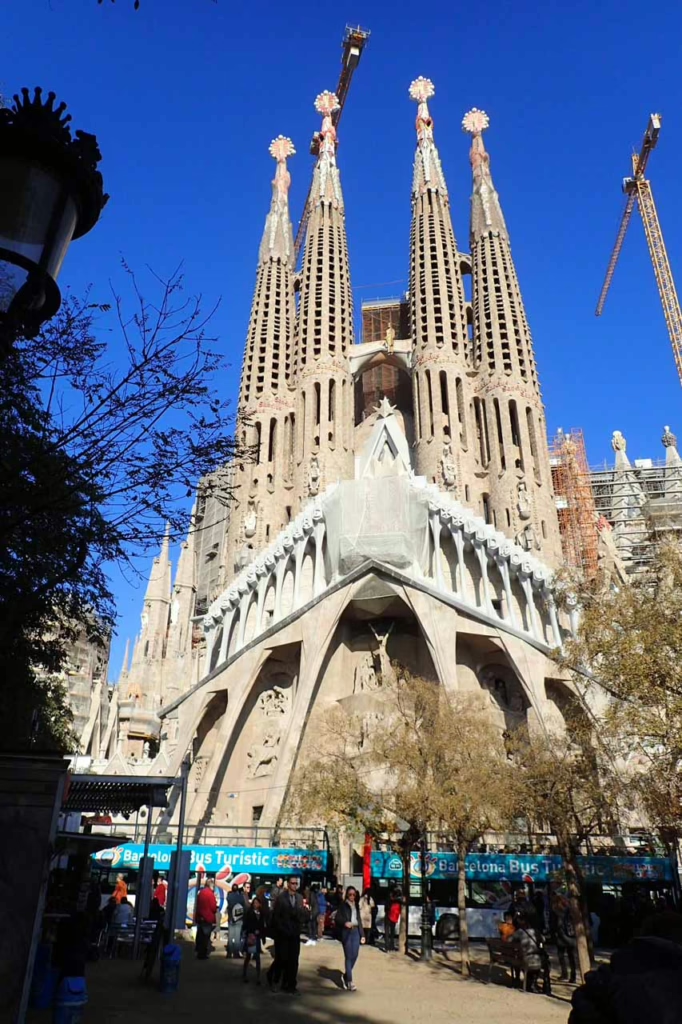
Of all of architect Antoni Gaudí i Cornet’s works in Barcelona, La Sagrada Família has to be the most iconic.
Set to be the world’s tallest church when it is completed in 2026, La Sagrada Família sees more than 3m visitors annually. It is the sixth most reviewed attraction in the world on TripAdvisor, with mostly positive reviews.
Famously, George Orwell wasn’t a fan, saying it was “one of the most hideous buildings in the world” and that he hoped it would be destroyed during the Spanish Civil War.
Whether you consider it gaudy or a work of genius, it is difficult not to be impressed. Ut is incredibly busy, but the visitor numbers are managed reasonably well.
To avoid those crowds entirely, here are some alternative sites to visit without being totally overrun.

On the surface at least, Casa Batlló is Gaudí at his most imaginative, despite it being a renovation of what was an existing building. Buy tickets in advance – after La Sagrada Familia this is about the most popular tourist attraction in town and there are always queues.
Don’t forget to check out Casa Amatller and Casa Lleó Morera adjacent – part of the “mansana de la discòrdia” or block of discord of Barcelona, named because of the sharply contrasting architectural styles.
Buy tickets online, and expect to be shoulder-to-shoulder with other tourists.
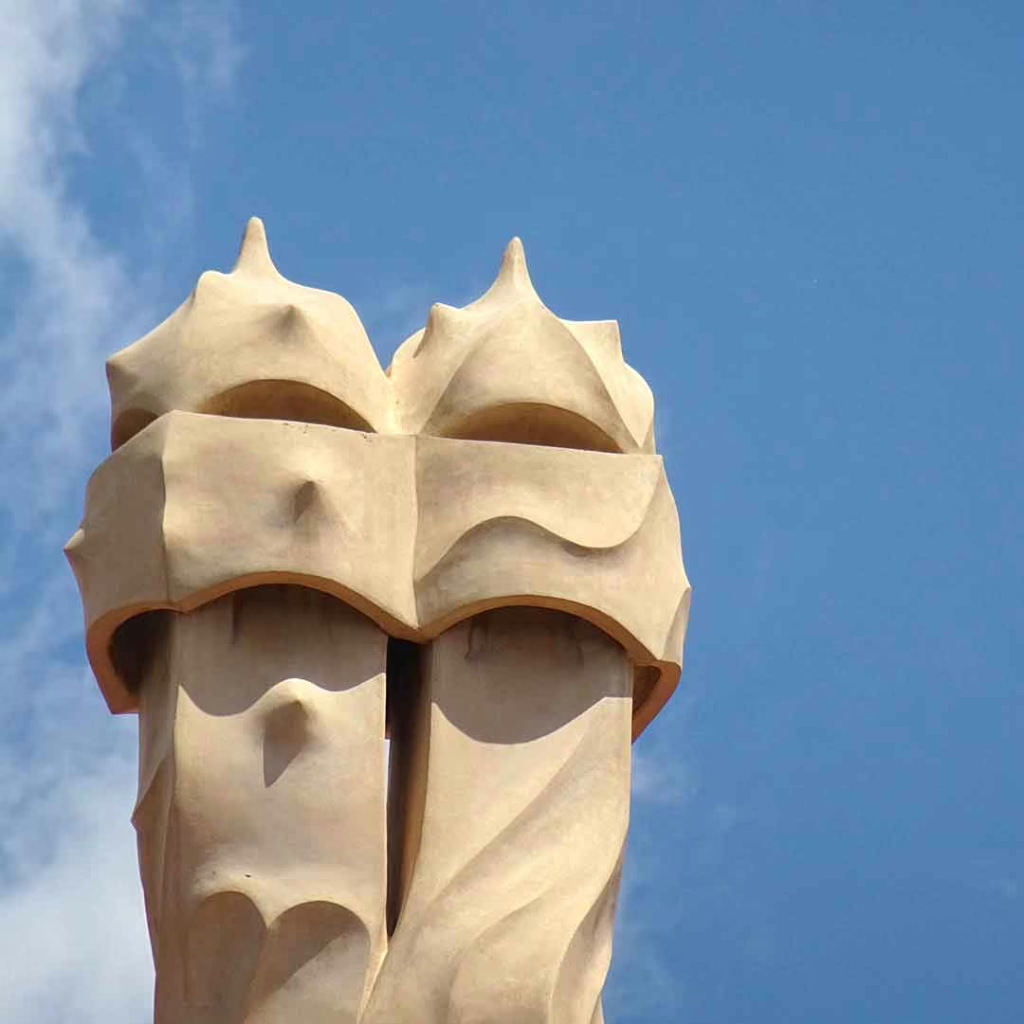
Casa Milà, more commonly known as La Pedrera (the quarry), is Gaudí’s last civil work and reflects the influence of nature in his work.
Designed from scratch as an apartment building, La Pedrera has only one remaining tenant. Still, visitors have access to 4,500 square meters of the building across five floors.
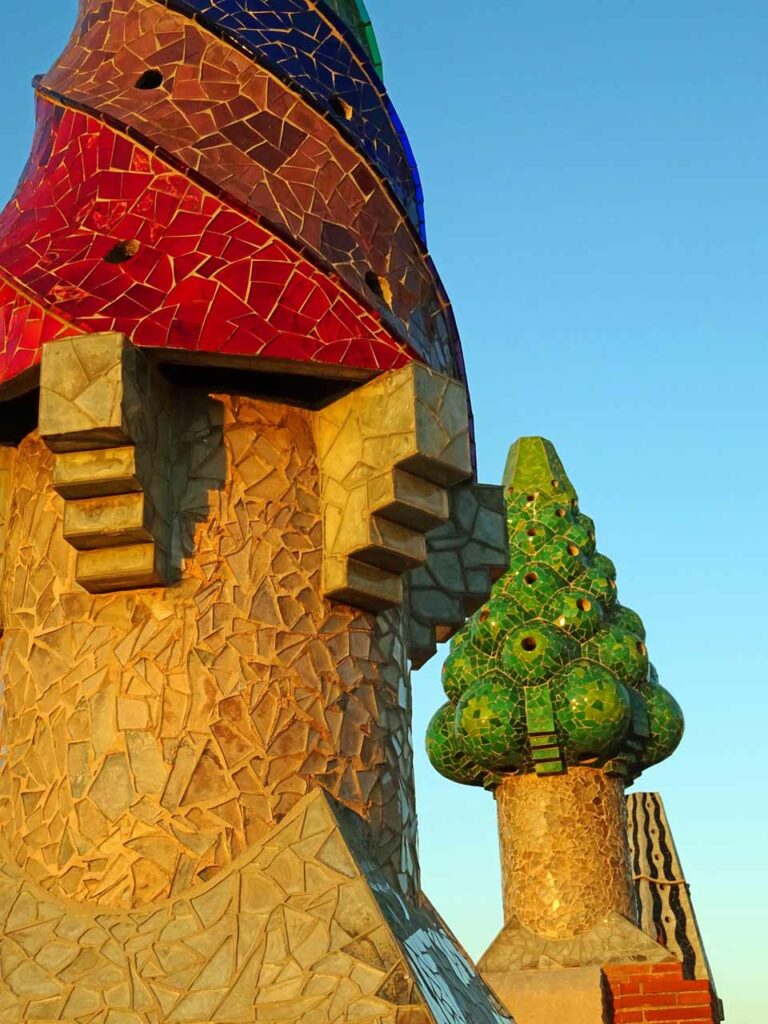
The private house of a wealthy industrialist, Palau Güell represents an early Gaudí commission.
A fascinating insight into the lives of the one-percenters of the time – more than any other of the Gaudí attractions in Barcelona, at Palau Güell you can almost imagine how its occupants lived.
It is less crowded than the other Gaudí buildings on the tourist trail, though the days when you just rock-up and buy a ticket may be over. Book online.
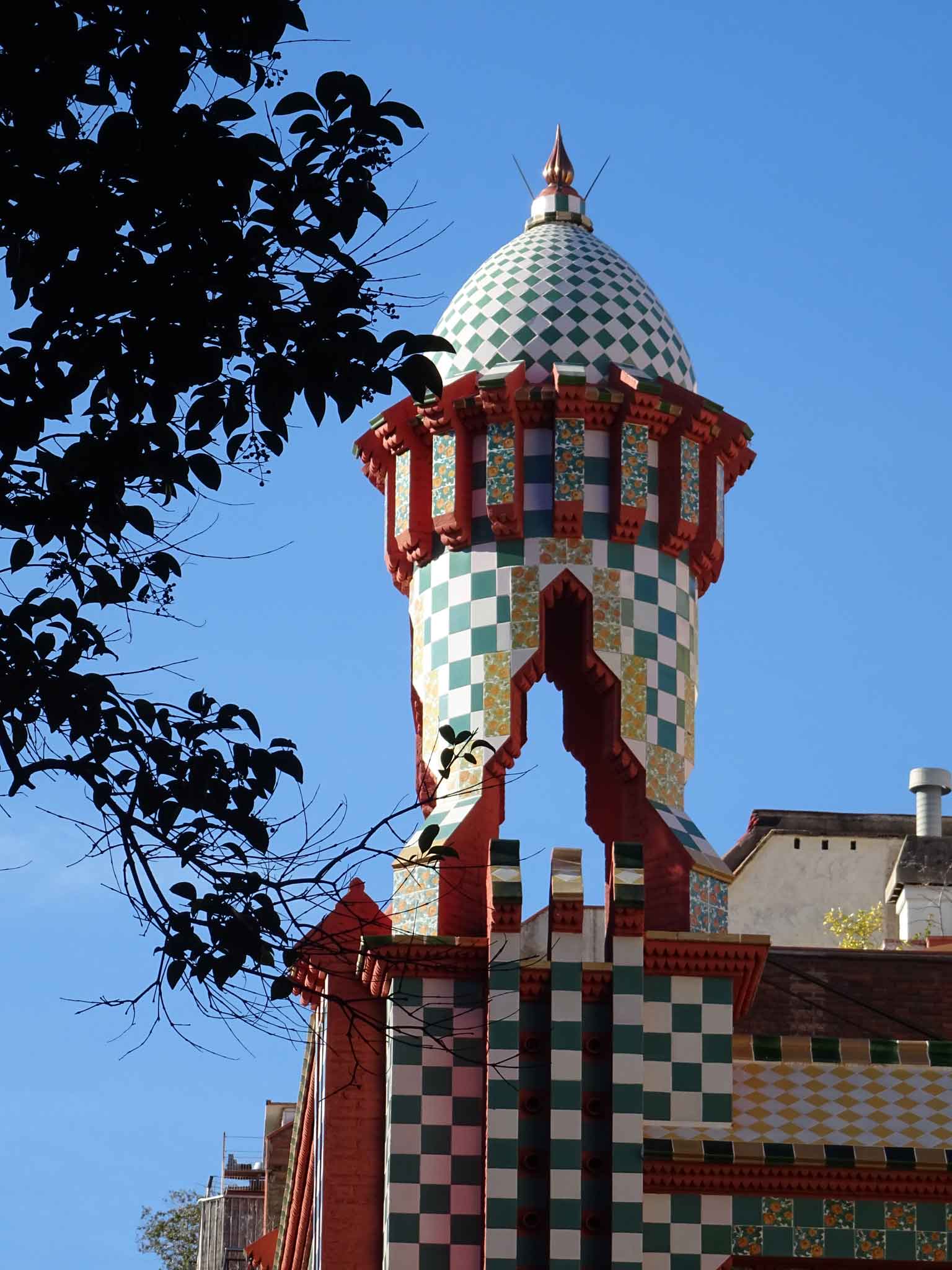
Gaudí’s first house was designed as a summer house for a wealthy stockbroker in what was at the time the outskirts of town. Unfortunately, the town encroached, and the house’s gardens were sold off over the years.
Still, the relatively compact house shows some of the young architect’s exuberant style and thoughtful design.
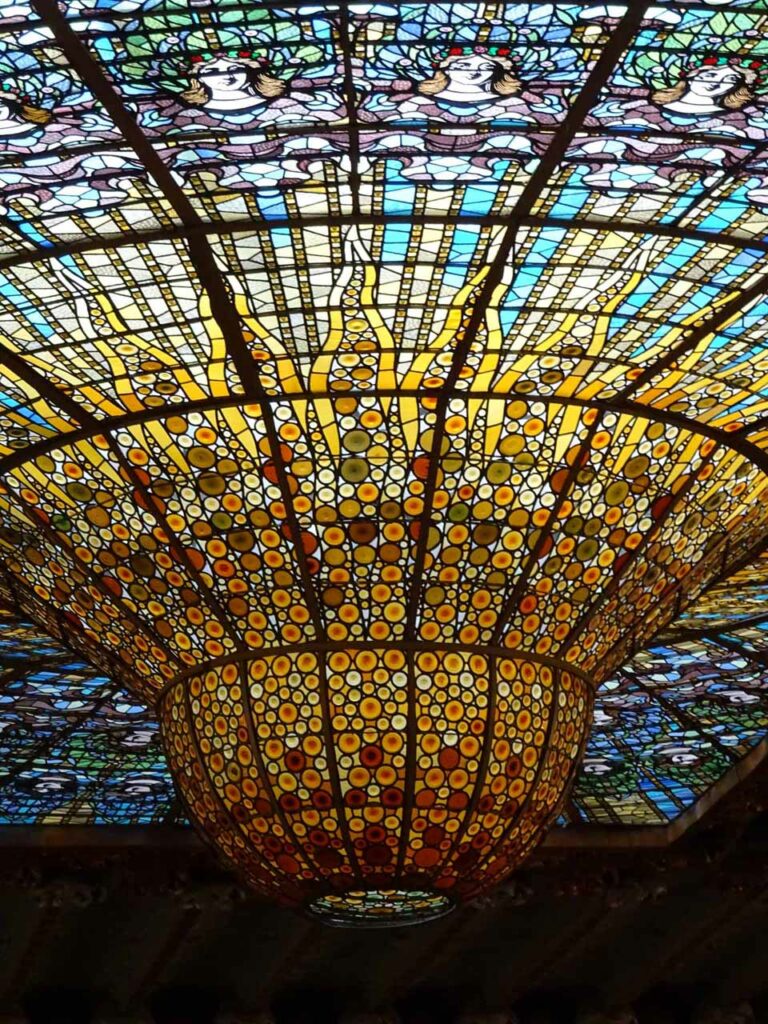
Had enough of Gaudí? Fair enough. The good news is that there are some spectacular buildings by his contemporary, Lluís Domènech i Montaner that in my opinion are more than a match for Gaudí.
The spectacular Palau de la Música Catalana is one of them. It’s well worth doing a guided tour or even a self-guided tour. Or better-yet, take in a performance and experience it the way it was intended.
Highly recommended.
Hospital de la Santa Creu i Sant Pau
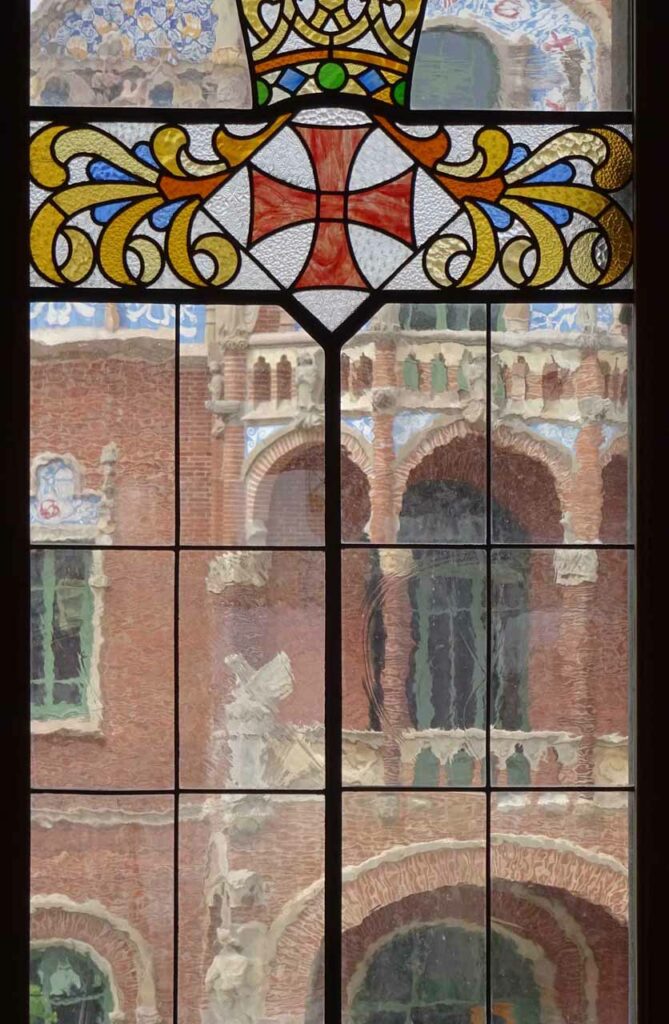
Yes, it is a hospital, but one that will make you rethink what hospitals should actually look like. Built in the early 1900s, Hospital de la Sant Pau is architect Lluís Domènech i Montaner’s most important work (though we love the Palau de la Música Catalana as well), and functioned as a hospital until as recently as 2009.
What is now the Sant Pau Art Nouveau Site is home to several workspaces for entities focused on social impact, as well as being a showcase for Montaner’s Modernista vision. It’s well worth the visit, and pleasantly uncrowded compared to La Sagrada Familia, which you can see from its entrance.
It is one of my top five alternatives in Barcelona for people wanting to avoid the tourist crowds.
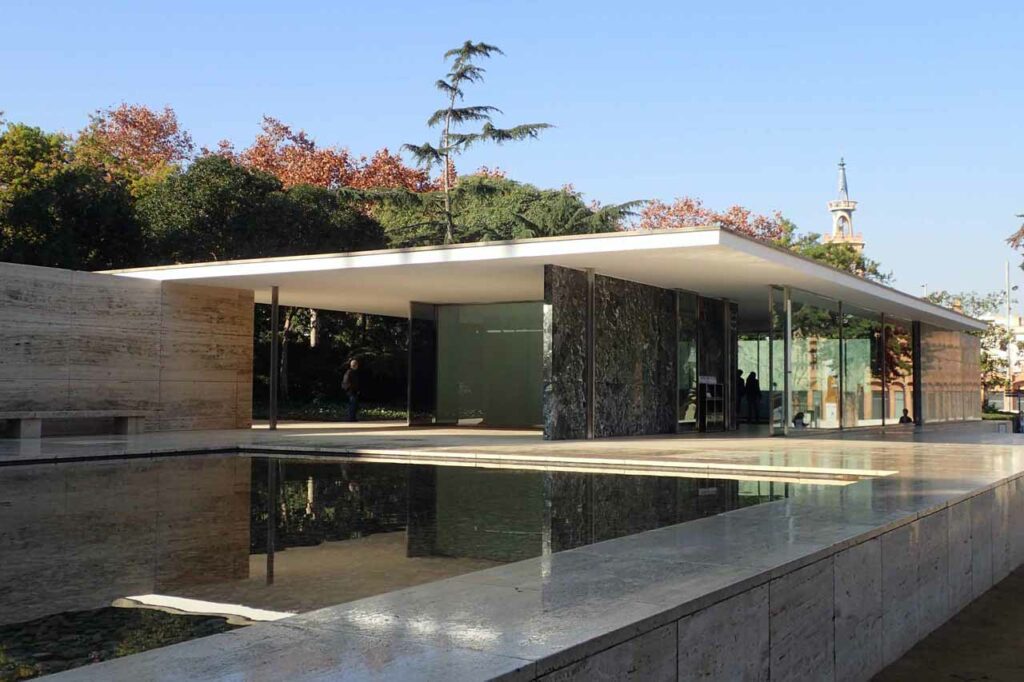
Switching from the Modernistas to a modernist the contrast couldn’t be more stark.
The Mies van der Rohe pavilion was designed in 1929 as the German pavilion for the International Exposition by Ludwig Mies van der Rohe and Lilly Reich, and is an icon of modernist architecture. To top it all off van der Rohe also designed the iconic Barcelona chair to showcase here.
What you see here is not the original, but a reconstruction built in the 1980s. Still, for a design from the 1920s to feel so contemporary is something.
The €9 entry price is a bit steep however: the pavilion is much smaller than today’s standard wedding-cake brick veneer McMansion. While the modernity, the sight lines, and materials are impressive, unless you’re an architecture tragic, it’s probably not a destination in and of itself; visit in conjunction with the MNAC or the Caixa Forum across the road.
History
Barcelona was probably settled around 7,000 years ago, so it has a little history. Every time someone digs a hole they find something archaelogocially significant, and these days that often leads to its preservation.
There are some great ways to explore this rich history.
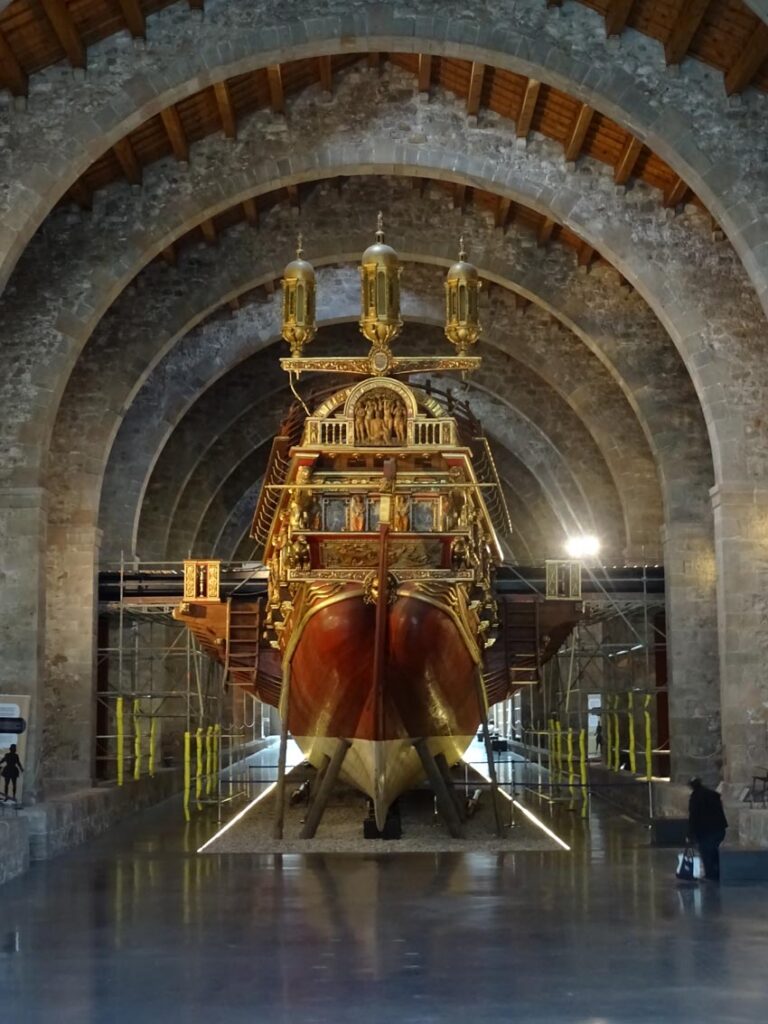
It may not float everybody’s boat (yuk yuk), but El Museu Marítim de Barcelona does have its charms. While I’m not terrifically excited by scale-model boats, I’ve visited numerous times.
The building itself is magnificent, having served as a shipyard from the 8th to 18th centuries, and the full-size reproduction of a galley from the 16th Century is arguably the highlight.
The courtyard – there’s a café too – is a lovely cool spot on a hot day, and occasionally serves as a location for a weekend market.
Museu d’Història de Barcelona (MUHBA) Plaça del Rei
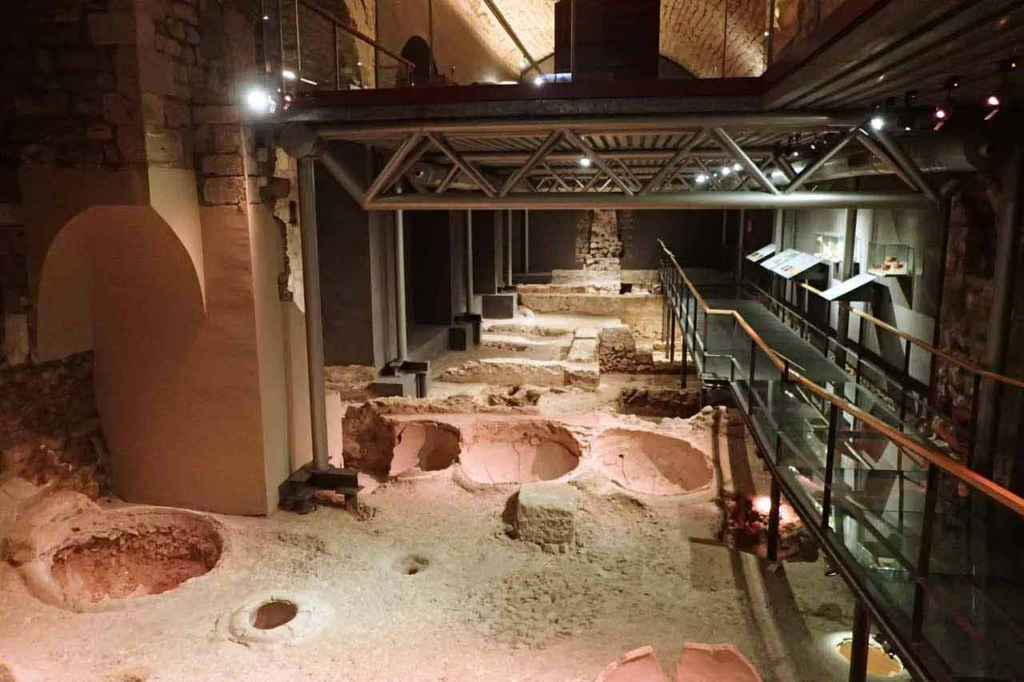
There’s a fascinating Roman city just under your feet in the centre of Barcelona’s old town. You can experience it at MUHBA Plaça del Rei.
One of 19 sites under the MUHBA banner, arguably the Plaça del Rei is the star.
Descend in the lift at MUHBA and go back a couple of centuries to see nearly an acre of the original Roman settlement of Barcino. From temples to laundries and wineries, the tour imparts an amazing sense of what life was like in this ancient settlement.
Recommended.
Archaeology Museum of Catalonia
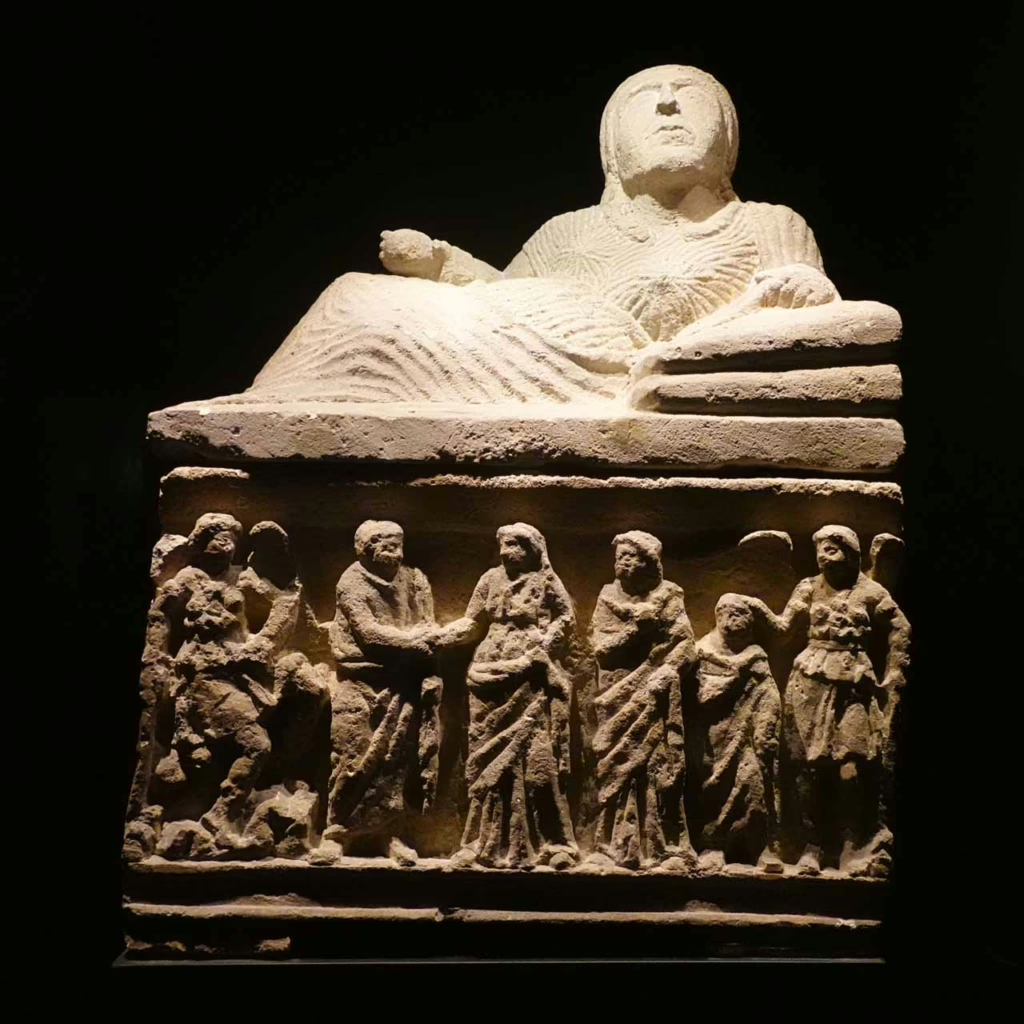
I’ll admit that as a schoolkid you’d have had to drag me kicking and screaming to something like the Archaeology Museum of Catalonia. These days I go “oooh, I’m learning something!”
What you get here is a collection that spans Catalan history from pre-history up until around the 19th Century. There are some highlights depending on your interests. Phoenician and Greek ceramics do it for me. But whatever floats your boat about Mediterranean antiquity, you’re likely to find it here.
The collection is housed in a building erected for the 1929 International Exposition. It is in a slightly out-of-the-way location near the foot of Montjuïc. But this makes it an excellent place to stop if you’re heading to any of the other attractions in the area.
You may have the place to yourself, or you may have to share it with some schoolkids kicking and screaming…
Markets
Most Barcelona neighborhoods boast a market. While markets may seem unusual attractions, many of these are popular things to see in Barcelona. Almost all are fascinating for the range of produce available, though some cater more to tourists than others.
There’s some great info from the local government here, for visitors who want to learn more.
Barcelona’s best markets are a genuine joy.
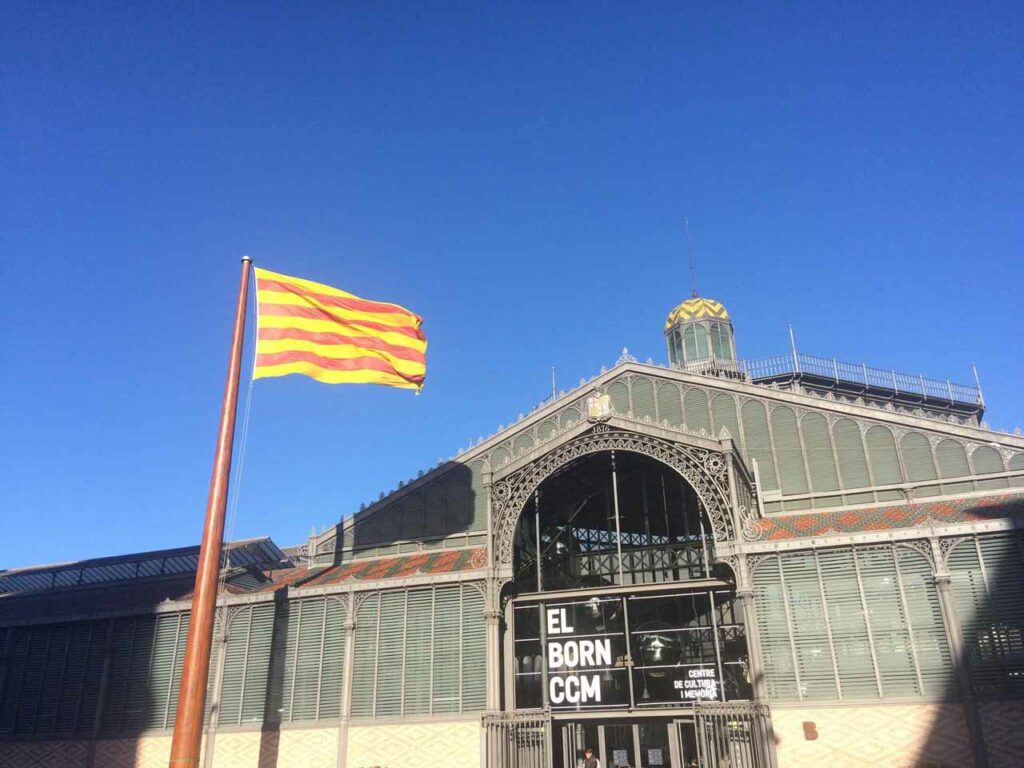
Don’t come here looking for fresh produce!
Where most Barcelona residents enjoy the benefits of a neighbourhood market, Mercat del Born is now an archaeological site.
The discovery of ruins of the 1700s town were uncovered during a renovation of the fabulous cast iron structure from the late 1800s.
The structure, designed by Antoni Rovira I Trias, is now used as the El Born Cultural and Memorial Centre with the ruins on display.
It’s free to enter and actually quite interesting – there’s even a decent bookstore and a café. The guided tour (Tuesday to Sunday at 4:00pm) takes you down into the old streets is well worth the effort and a bargain at 4€ per person.
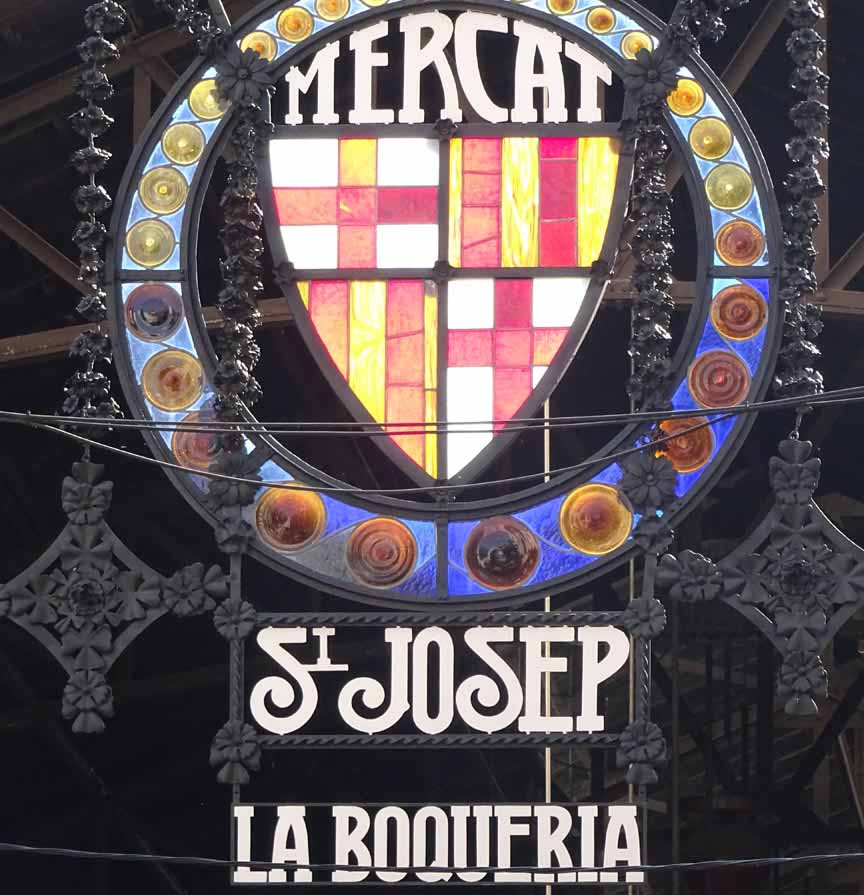
The Mercat de Sant Josep de la Boqueria, to give La Boqueria its proper name, is one of Barcelona’s busiest attractions.
If you love food, you’ll see why – not only are the raw ingredients available, but there are also numerous stalls selling cooked (and pre-prepared) food. There are numerous bars in the market – along with dozens of others around the periphery.
Unfortunately, La Boqueria is also overrun with tourists, and many of the traditional vendors have given way to stalls selling pre-cooked food. There are still some original stalls and what look like original shoppers. Watch out for grannies with shopping trolleys – they don’t have much patience with slow moving tourists.
Can’t say I blame them.
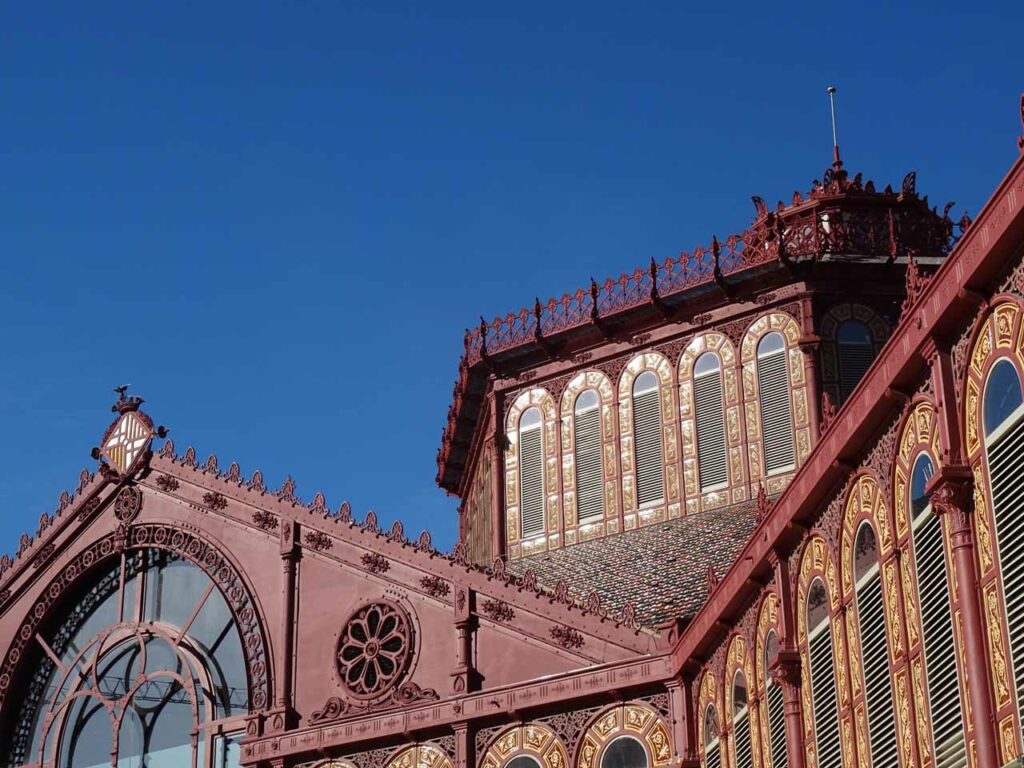
After a multi-year restoration the Mercat de Sant Antoni reopened in early 2018. The focus was on serving the community, so there aren’t the vendors selling tubs of pre-prepared food you expect at La Boqueria.
There is a good selection of vendors selling seafood, meat, fruit and vegetables, charcuterie, cheese and some of the best olives you can get. Around the edges are stalls selling clothes.
Sadly, there are only a couple of dining establishments at all, which seems a missed opportunity.
Sant Antoni Market (produce): Monday to Saturday 8:00am to 8:00pm.
“Charms” Market (mostly clothes): Mondays and Wednesdays to Saturdays from 10:00am to 8:30pm.
Book market (outdoors) on Sundays.
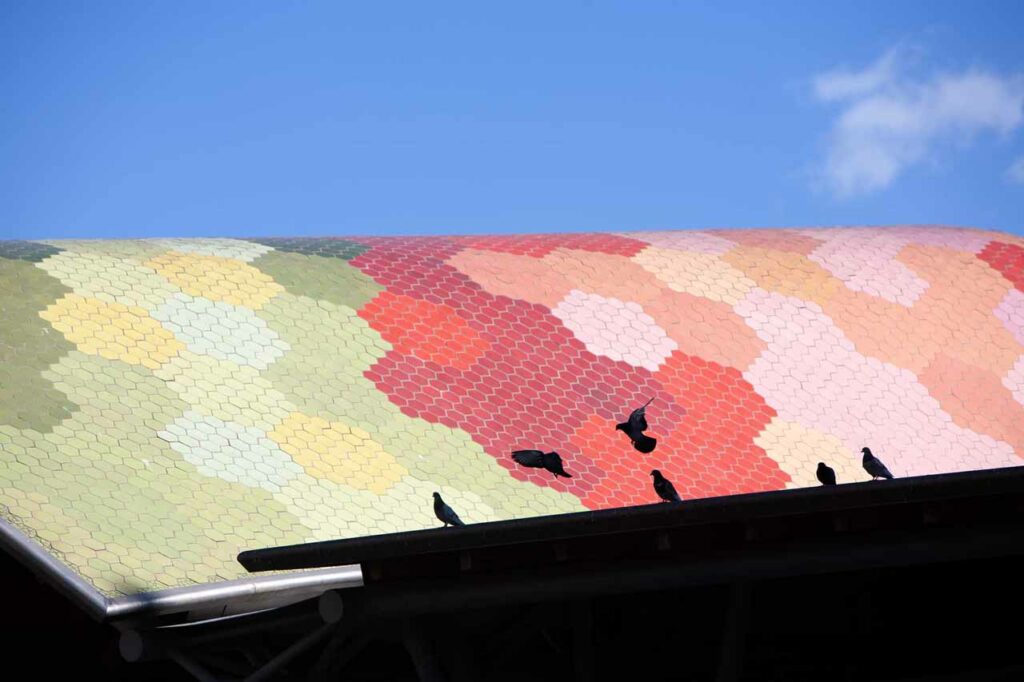
Santa Caterina is Barcelona’s earliest covered market, which saw an upgrade from the late 1990s with an iconic new roof.
Stallholders offer the wide range of produce you expect from local markets, while a couple of bars and Cuines Santa Caterina offer tapas and bigger plates. The old town location makes it an easy attraction for visitors.
Mondays, Wednesdays and Saturdays: 7:30am to 3:30pm.
Tuesday, Thursday and Friday: 7:30am to 8:30pm.
Reduced hours in the summer months – open to 3:30pm Monday-Saturday, except Fridays when it is open to 8:00pm.
Outdoors
Barcelona is blessed with lovely weather almost year-round. But it is on sunny days that the parks and gardens come alive.
Whether you want to mingle with the crowds or get away from it all, Barcelona has a park for you. Barcelona’s best parks and gardens are a breath of fresh air.
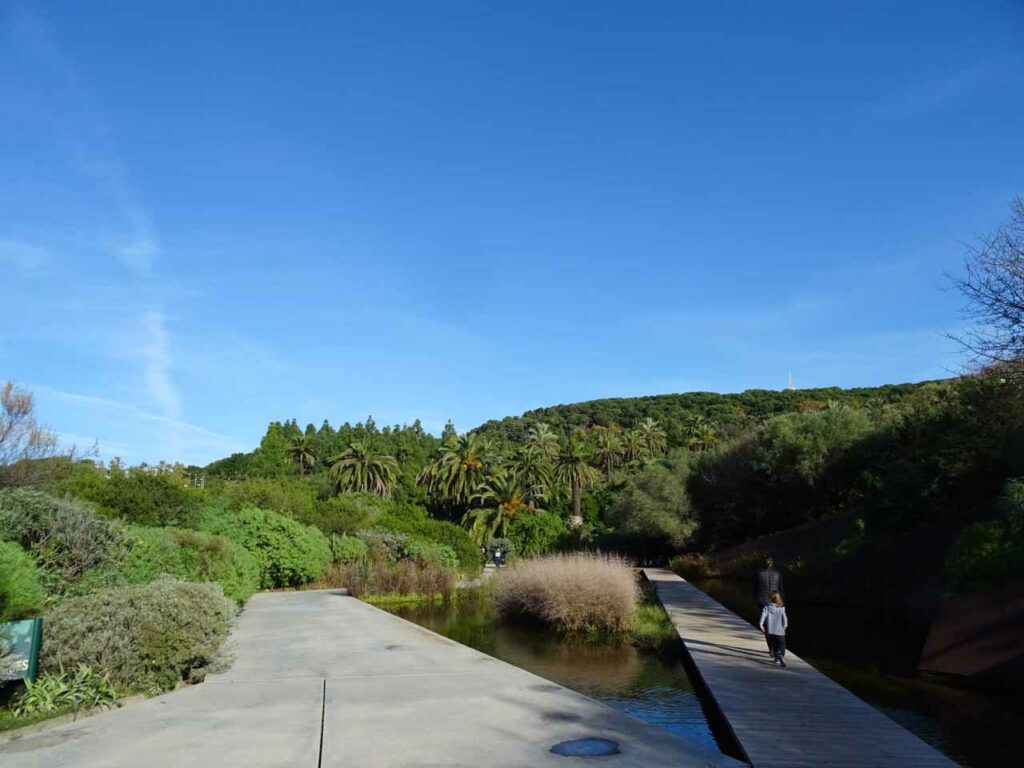
Possibly you’re not visiting Barcelona to discover the native habitats of Australia, Chile, the Canary Islands, or South Africa, but the Jardí Botànic de Barcelona does it for you in some style. There is a theme that may not be immediately obvious: all these locations have a ‘Mediterranean-type climate’.
You do get to explore some vegetation native to the Mediterranean, however, and helpful signage along the way means you may learn something in the process.
Views over the Olympic buildings are a bonus.
Entry is a reasonable €5, though the first Sunday of the month and other Sundays after 3:00pm entry is free.
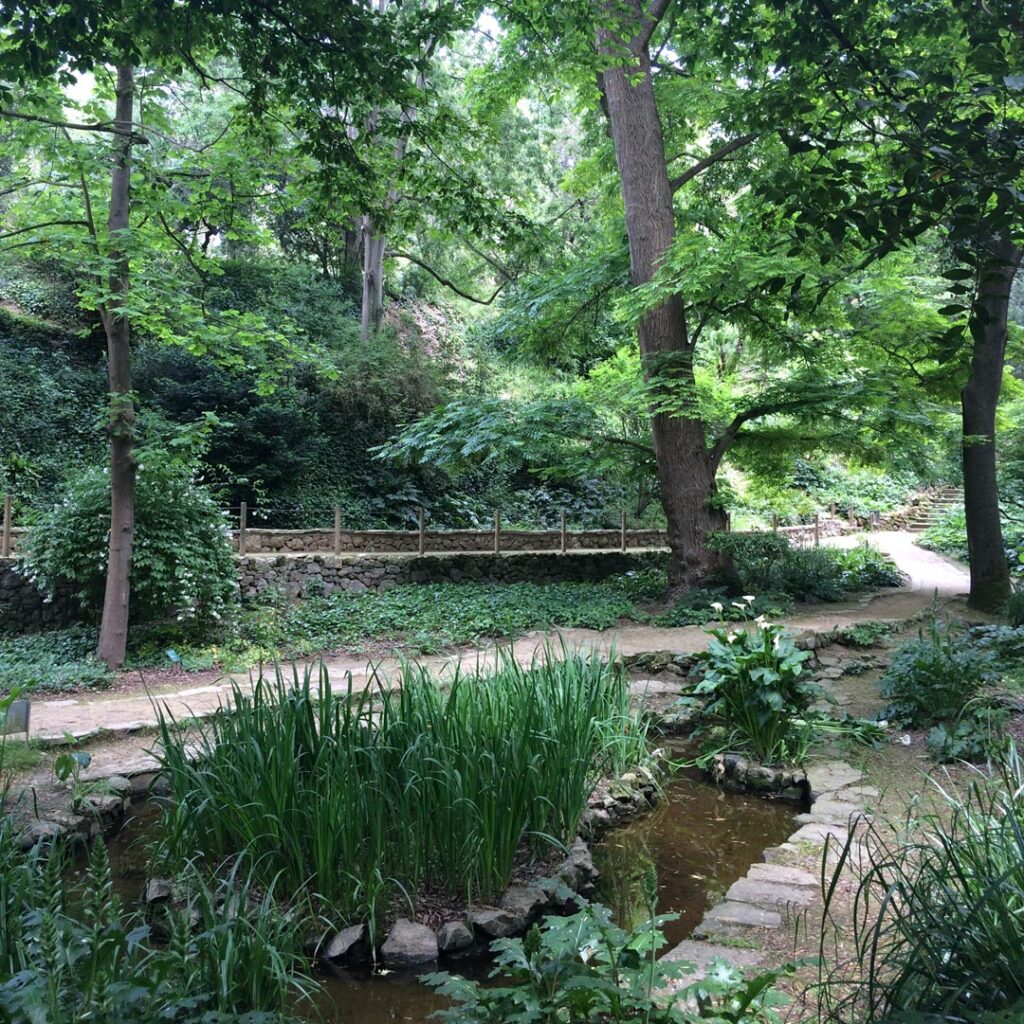
There are actually two botanic gardens on Montjuïc: the new gardens near the Olympic stadium, and the Jardí Botànic Històric just behind the Museu Nacional d’Art de Catalunya.
Established in a pair of old quarries, the gardens provide a pleasantly cool respite on a hot day, and are really rather lovely. Even better – entry is free.
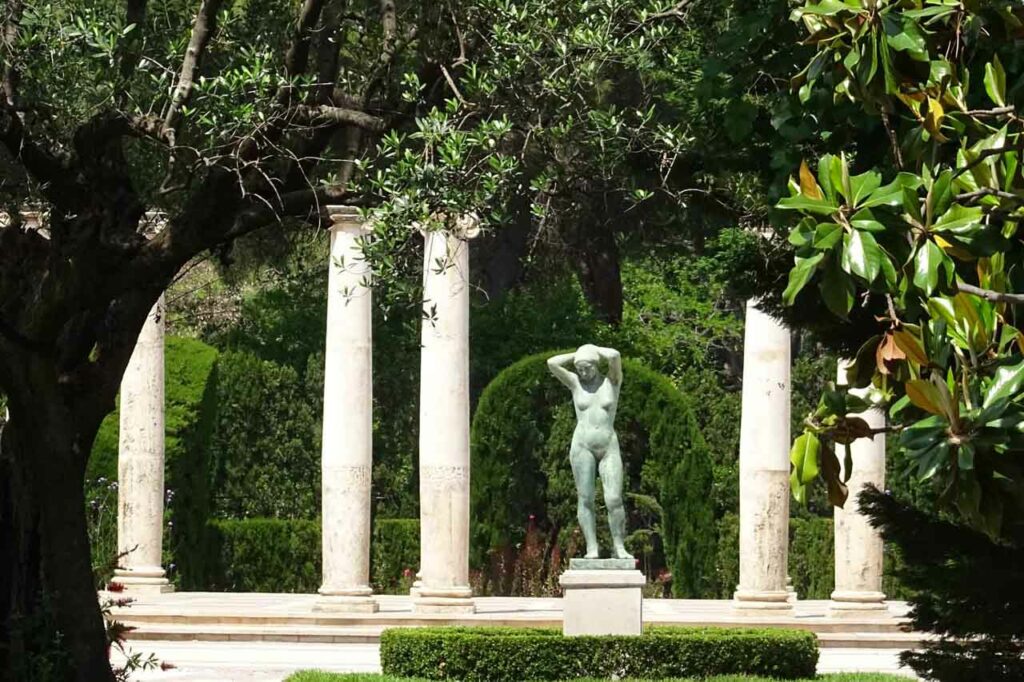
Montjuïc spoils you for choice when it comes to gardens. The Jardins de Joan Maragall – Palauet Albénizcontain the official residence of the Spanish royal family, which explains why it is seldom open – you can only visit between 10:00 am and 3:00 pm on weekends or public holidays.
The royal pavilion, or Palauet Albéniz, was built for the 1929 International Exposition, and the gardens surrounding it were designed at the same time by Jean-Claude Nicolas Forestier.
The gardens were extended in 1970 and named after the Catalan poet Joan Maragall. They are now home to 32 sculptures dating from the 1950s to 1970, along with original neoclassical details.
The fountains, sculptures, and tree-lined pathways are a big draw, but for me it is the serenity. You seldom have to share the park with more than a handful of other people.
Lovely.
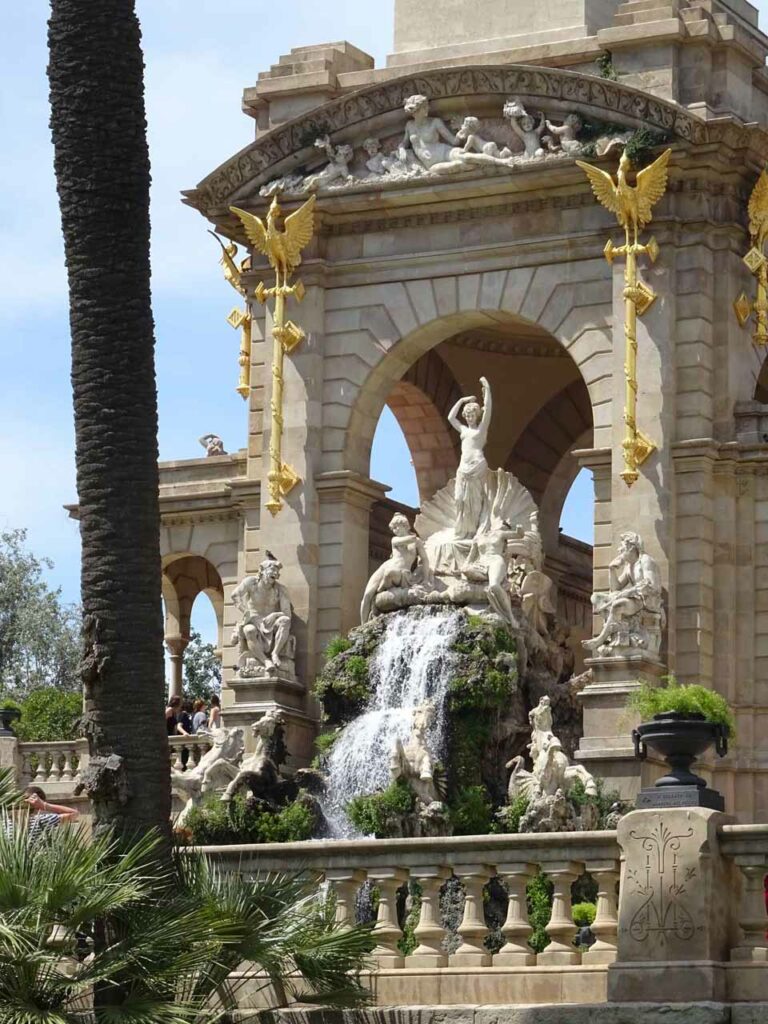
The city’s main central park absolutely fills up on a pleasant day, but there’s always somewhere to sit and enjoy the passing parade.
The park also features some leftover buildings from the 1888 Universal Exhibition – some of which have been restored, and some are under renovation – and a spectacular fountain and lake designed by the park’s architect Josep Fontseré.
The park is also home to Barcelona Zoo, and attached to the promenade along Passeig de Lluís Companys that culminates at the Arc de Triomf, which was the gateway to the Exhibition.
It’s also a great place for tourists to experience a bit of local colour, as opposed to just seeing sites with other tourists.
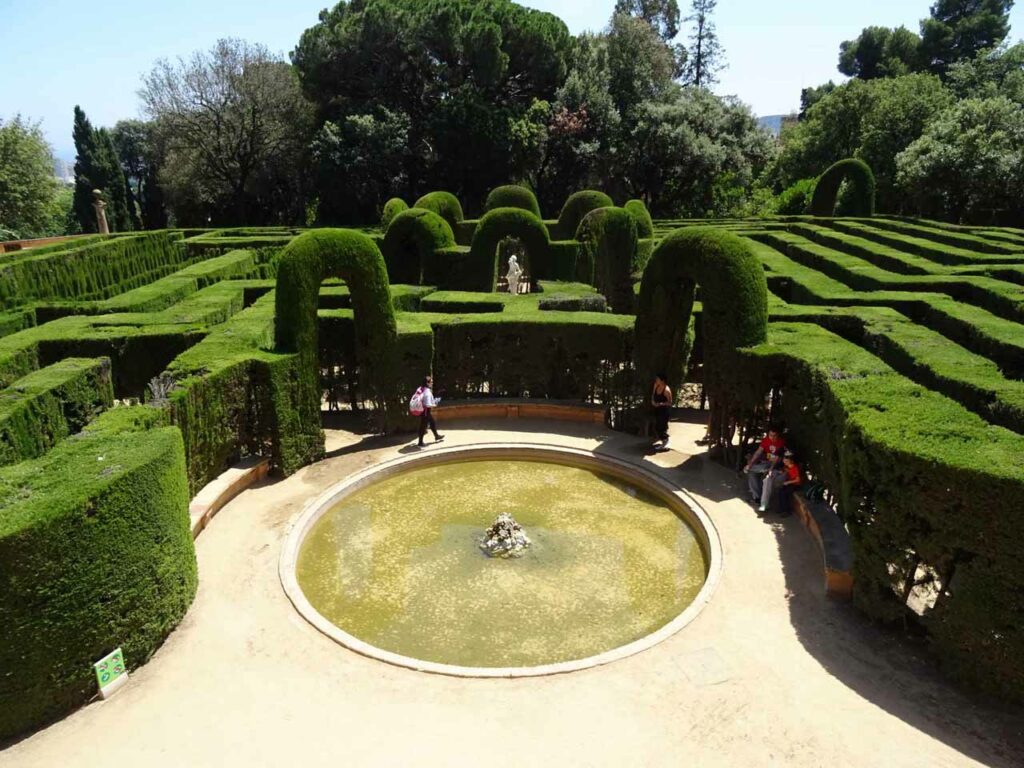
On the outskirts of town (but conveniently-located a 10 minute walk from the Pg. Vall d’Hebron Metro stop) this maze is the city’s oldest preserved garden.
The maze is the headline attraction, but the formal gardens give way to a lovely forested area as well. Keep an eye open for the wild pigs that roam the grounds.
Check the website for opening times.
Where to stay in Barcelona
Heading to Barcelona? Check out our hotel recommendations here.
